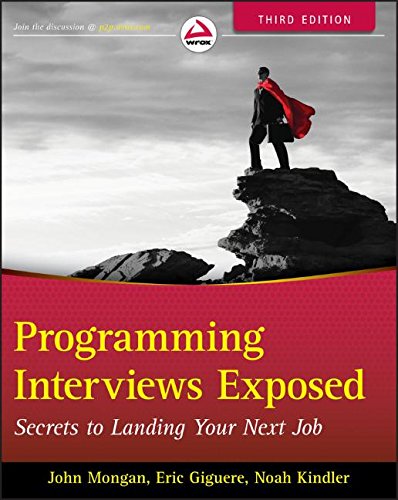When it comes to researching the most difficult HTML interview questions for a job interview, the short answer is that there are no really easy ones. The fundamentals should be so thoroughly known that the highest standards will be expected the more experienced a programmer you are.
HTML (Hyper Text Markup Language) is programming language that is at the heart of a website, and is used to make web pages viewable. Up until now, the importance of HTML was often taken for granted outside of web developers’ circles.
There has been more of a movement for people outside this specific sector to learn HTML, which is why it is so important that an editor or web developer needs to know it backwards and has to keep apace with its latest developments and iterations.
If you’re going for a job or promotion in web development, you can brush up these fundamentals, by researching the most common and most difficult HTML interview questions you are likely to be asked by interviewers. Thanks to the collaborative nature of web development, there is a rich resource of HTML interview questions shared and discussed online.
You should also source one of the many great HTML interview questions & answers guidebooks online, to ensure you are best prepared to face even the toughest HTML interview questions, such as HTML5 Interview Questions & Answers by Agarwal and Naman Agarwal; as well as the highly rated Cracking the Coding Interview: 189 Programming Questions and Solutions by Gayle Laakmann McDowell; and Programming Interviews Exposed: Secrets to Landing Your Next Job by John Mongan, Noah Kindler, and Eric Giguere.
Image Source: Amazon
10 Difficult and Most Common HTML Interview Questions
To help you prepare for the toughest HTML interview questions you will face, here are 9 of the core, most common, and difficult HTML interview questions, complete with answers, posted online by experts. Good luck, HTML AGENTs!
1. What were some of the key goals and motivations for the HTML5 specification?
HTML5 was designed to replace HTML 4, XHTML, and the HTML DOM Level 2. According to Toptal.com, the key goals and motivations behind the HTML5 specification were to:
- Deliver rich content (graphics, movies, etc.) without the need for additional plugins, such as Flash.
- Provide better semantic support for web page structure through new structural element tags.
- Provide a stricter parsing standard to simplify error handling, ensure more consistent cross-browser behaviour, and simplify compatibility with documents written to older standards.
- Provide better cross-platform support whether running on a PC, Tablet, or Smartphone.
2. HTML Coding Test – Table Tags
The most typical HTML interview questions can include coding tests on the fundamentals. Here, from CareerGuru99.com is an example: Write a HTML table tag sequence that outputs the following:
50 pcs 100 500
10 pcs 5 50
The answer is provided below:
<table> <tr> <td>50 pcs</td> <td>100</td> <td>500</td> </tr> <tr> <td>10 pcs</td> <td>5</td> <td>50</td> </tr> </table>
3. HTML Coding Test 2 – Markup Validity
Here’s another example of the kinds of coding tests you can expect among your HTML interview questions, provided by Sitepoint.com:
Consider the following markup. Is it valid? If not, can you explain why?
<figure> <picture> <source media="(min-width: 40em)" srcset="large.jpg 1024w, medium.jpg 640w, small.jpg 320y"> <img src="medium.jpg" alt="London by night"> </picture> <figcaption>A landscape of London by night</figcaption> </figure>
Answer: The markup uses the relatively new picture element. The code is all valid apart from the last image specified in the srcset attribute. 320y is not a valid value, and the y should be replaced with a w.
4. How Can I Get Indexed Better by Search Engines?
In a world where business has become increasingly focused on SEO and search engine results, this question, or something like it, could reasonably be expected to be among the HTML interview questions you will be asked.
According to FreeJavaGuide.com, it is possible to get indexed better by placing the following two statements in the <HEAD> part of your documents:
<META NAME="keywords" CONTENT="keyword keyword keyword keyword"> <META NAME="description" CONTENT="description of your site">
Both may contain up to 1022 characters. If a keyword is used more than 7 times, the keywords tag will be ignored altogether. Also, you cannot put markup (other than entities) in the description or keywords list.
5. What is the difference between span and div?
According to ThatJSdude.com, the answer to this, one of the most commonly asked old school html interview questions, is: div is a block element and span is inline element. For bonus points, you could point out that it’s illegal to place a block element inside an inline element, and that while div can have a p tag, and a p tag can have a span, it is not possible for span to have a div or p tag inside.
6. What are ‘web workers’?
Toptal.com has this as another common (although difficult, if you are not on top of your coding game) HTML interview questions.
A web worker is a script that runs in the background (i.e., in another thread), but enables the user to continue to interact with the page. The script runs without the page having to wait for it to complete. Web workers utilize thread-like message passing to achieve parallelism.
7. The main element
A query about the main element is one of the 10 most typical HTML interview questions identified by Sitepoint.com. Interviewees are often asked to define the main element, outline its goal, and whether its two specifications (WHATWG and W3C) agree on its definition.
W3C describes the main element as either the main content of the page, content that describes the main topic of a page, or the central functionality of an application. W3C also states that a document must not include more than one main element.
WHATWG does not assign any semantic value to the main element, instead describing it as a container for the dominant contents of another element. WHATWG does not limit the user in the number of times the main element can be used in a single document. If you have multiple article elements on a page, you may want to markup the main content of each article with a separate main element.
8. How do I hide my source?
Something of a trick question because, as FreeJavaGuide.com point out, you can’t. The source is necessary for the browser to display your document. You must send the complete, unencrypted source to the browser. Many browsers have a ‘View Source’ option, and even in the case of those that do not, it’s possible to retrieve a document using telnet, or check the browser’s cache, to determine its source. It is possible to put several hundred empty lines above of the actual source, which may lead someone to believe that there is nothing there. But even that will be given away by the scrollbars.
9. When is it appropriate to use the small element?
According to Sitepoint.com, small was a presentational element of HTML 4.01 used to mark up smaller text. The element should be used in HTML5 to represent legal disclaimers, etc. If you are asked to provide an example of the small element in use, here is what Sitepoint.com have provided.
<img src="image.jpg" alt="London by night"> <small>The copyright of this image is owned by Aurelio De Rosa</small>
10. How do you indicate the character set being used by an HTML5 document? How does this differ from older HTML standards?
In HTML5, the encoding used can be indicated with the charset attribute of a <meta> tag inside the document’s <head> element:
<!DOCTYPE html> <html> <head> ... <meta charset="UTF-8"> ... </head> ... </html>
This is a slightly simpler syntax from older HTML standards, which did not have the charset attribute. For example, an HTML 4.01 document would use the <meta> tag as follows:
<!DOCTYPE HTML PUBLIC "-//W3C//DTD HTML 4.01//EN" "http://www.w3.org/TR/html4/strict.dtd"> <html> <head> ... <meta http-equiv="Content-Type" content="text/html; charset=utf-8"> ... </head> ... </html>




